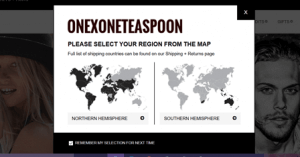Today’s business landscape is more interconnected than ever before, with companies worldwide striving to deliver exceptional customer service to stand out in a fiercely competitive global environment. This narrative is particularly relevant for companies in the Asia-Pacific region aspiring to penetrate American and European markets.
Unravelling the Transforming Landscape of Customer Service
Historically, customer service was viewed as a mere transactional interaction between businesses and customers. However, this paradigm has undergone a significant shift with technological advancements and ever-increasing customer expectations. Nowadays, customer service is all about crafting deeply personalized experiences that resonate with customers’ needs and expectations.
This shift towards personalized customer service is already underway in the Asia-Pacific region. Yet, this journey has just begun. To thrive in Western markets, Asia-Pacific born companies must internalize that customer service is no longer just an idea or singular department; it’s a culture that seamlessly permeates every nook and cranny of the organization.
The Indisputable Influence of Customer Experience
The essence of customer experience (CX) can’t be overstated in the current business environment. A PWC study reveals that almost 80% of American consumers underscore speed, convenience, knowledgeable assistance, and friendly service as crucial elements of a positive customer experience. Furthermore, a whopping 86% are willing to pay more for a superior customer experience.
The message is clear: for Asia-Pacific companies to make inroads into American and European markets, they must prioritize crafting an exceptional CX. It’s not just about the product or the price; it’s about orchestrating a positive, seamless journey that resonates with the customer at every touchpoint, fostering loyalty and advocacy.
Charting the Path: Customer Service Strategies for Asia-Pacific Companies
Building a successful CX strategy that resonates with Western markets isn’t a one-size-fits-all formula. However, the following strategy points can serve as a compass to guide Asia-Pacific companies on their journey:
1. Cultivate a Customer-Centric Culture:
American and European consumers treasure a personalized and humanized approach. They desire to be seen, heard and most importantly, understood. Therefore, companies should foster a culture where customer needs are at the forefront of every business and internal decision. This customer-centric philosophy should be broader than customer service departments. Instead, it should be embraced by all departments, from product development to sales and marketing, infusing every interaction with the goal of enhancing the customer experience.
2. Harness Technology and AI:
Digital transformation is the name of the game. Sophisticated technological tools, including AI and machine learning, can provide personalized experiences, automated support, and rapid service, all highly valued by Western consumers. For instance, AI-powered chatbots can offer 24/7 customer support, while machine learning algorithms can deliver personalized product recommendations. An Accenture survey reveals that 57% of US and European consumers appreciate services provided by AI-based technology, making the case for investing in these technologies even more potent.
3. Respect Cultural Nuances:
Companies must understand and appreciate cultural nuances to truly resonate with Western customers. This might involve modifying communication style, exploring local customs, holidays, and events, and respecting values such as privacy. For example, providing ample personal space and respecting privacy are integral aspects of Western cultures, and these values should be reflected in customer interactions.
4. Invest in Customer Feedback Mechanisms:
A proactive approach to capturing and analyzing customer feedback is vital for continual improvement. Feedback mechanisms such as customer surveys, social media monitoring, and direct customer interviews can provide invaluable insights into what’s working and what may need tweaking. This continual feedback loop is vital to enhancing the customer experience and helping businesses adapt their strategies to customer needs and expectations.
5. Embrace a Multichannel Approach:
Modern customers expect to interact with businesses via multiple channels—be it email, social media, live chat, or phone calls. Asia-Pacific companies should therefore build an omnichannel customer service strategy that provides a seamless, integrated customer experience across all platforms.
Capitalizing on Technology: Tools and Software for Efficiency and Growth
Companies striving to adapt to the evolving customer service landscape must recognize the value of leveraging modern tools and software. These solutions help to provide efficiency, automation, and data insights to drive a superior customer experience.
Here are a few of the most impactful tools and software that can be leveraged as companies venture into Western markets:
1. CRM Systems:
Customer Relationship Management (CRM) systems, such as Zendesk, Salesforce, and Zoho, offer a centralized platform for managing all customer interactions that can be accessed across your various in-house teams. These systems enable businesses to track the full customer journey, manage relationships, and personalize customer interactions. They also provide valuable data insights that can be distilled and guide a teams decision-making and strategy development.
2. AI-Powered Chatbots:
Chatbots powered by AI can significantly enhance the efficiency and responsiveness of your customer service strategy. These powerful tools provide 24/7 customer support, answering FAQs, resolve simple issues, and route complex queries to human agents. This helps with overall customer satisfaction and frees up human customer service agents to focus on higher-level tasks.
3. Helpdesk Software:
Robust help desk ticketing software, such as Zendesk and Freshdesk, have become essential tools for managing customer support tickets. They enable businesses to track, prioritize, and resolve customer queries promptly and in an organized fashion, which can be tailored to a company’s specifications. They also offer automation features that streamline workflow which increases efficiency.
4. Social Media Management Tools:
In an era where customers expect businesses to be present and responsive on social media, tools like Hootsuite and Buffer are invaluable. They allow companies to manage multiple social media platforms from a single dashboard, schedule posts, and monitor customer interactions and feedback.
5. Customer Feedback Tools:
Customer feedback is a critical element of customer service. Tools like SurveyMonkey and Qualtrics allow businesses to gather customer feedback through surveys. Meanwhile, social listening tools like Brandwatch and Sprout Social provide insights into customer sentiment by monitoring social media conversations.
6. Personalization Software:
Personalization is a crucial aspect of the modern customer experience strategy. Tools like Dynamic Yield and Optimizely allow businesses to personalize their website and other customer touchpoints based on user behaviour and preferences, leaving customers feeling like your brand understands them.
7. Data Analytics Tools:
Data-driven decision-making is no longer an option if you want a successful customer service strategy. Google Analytics is a must, but 3rd party solutions like Tableau provide insights into customer behaviour, helping businesses understand their customers better and make more informed, customer-centric decisions.
With these strategies, Asia-Pacific-based companies can significantly enhance their customer service, improving their appeal to American and European markets. However, it’s essential to remember that the journey to superior customer service is ongoing, requiring constant adaptation and a deep commitment to meeting and exceeding customer expectations.
Bill Gates once remarked, “Your most unhappy customers are your greatest source of learning.” By staying open to feedback and continually striving for improvement, Asia-Pacific companies can conquer the challenge of delivering superior customer service, bolstering their competitiveness in the global market.
























